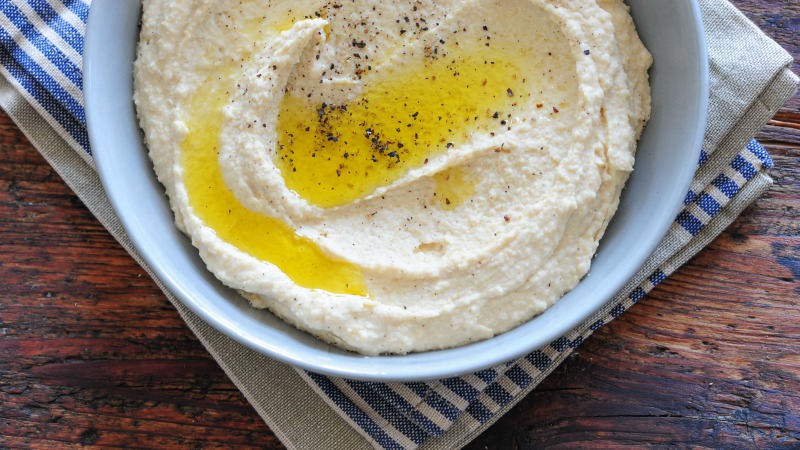Miso is a wonderfully salty paste made from fermented soybeans that packs a ton of savoury, umami flavour into a teaspoon. It’s most commonly used in miso soup, but the funky seasoning can be used in a variety of delicious applications, from chip dips and sandwich spreads, to caramels and cake frostings.
Miso is fermented with koji, a fuzzy white fungus used to make soy sauce, rice vinegar, and sake. (If you want to read more about this indispensable fungus, Cook’s Science has a great write up on the stuff.) There are three common types of main types of miso — red, white, and yellow — and each one has its own unique flavour profile. (There are of course, many other types, but these are the ones you are most likely to encounter.)
- Red Miso: Red miso is rich, with a deep umami flavour that is best used in meaty dishes, glazes, or sauces for hearty vegetables.
- White Miso: White miso (aka Shiro Miso) has a distinct sweetness to it, and is best suited for dressing salads and light vegetable dishes. This mild and sweet paste is also great for adding depth and a little saltiness to desserts.
- Yellow Miso: This is the “middle of the road” miso that resides somewhere in between white and red, flavorwise. It’s good in soup and sauces, and can hang in a mayo-based sauce or dressing without overwhelming other components of the dish.
Of course, there can be variation within each colour, depending on fermentation time (darker = more fermented), the strain of koji that was used, and how much salt it was fermented with. But enough about what it is, let’s talk about what you should do with it.
It’s a Souper Star
Obviously, we cannot talk about miso without talking about soup. A classic miso soup is one of the most comforting things one can consume on a chilly evening, and it’s pretty easy to make. The above video walks you through the process of whipping up a steamy pot of the stuff, but the most important thing to keep in mind is that the soup must not be boiled once the miso is added, as doing so will damage those helpful live enzymes, and dampen the flavour.
As far as ratios, you’ll need 1 tablespoon of miso for every cup of dashi ” a flavour bomb of a broth made with dried seaweed and bonito. You can make your own and there are some pretty decent instant options on Amazon. Just heat your broth and add in the miso, making a slurry with a little bit of the broth before pouring it in the pot to prevent clumps from forming. (If you don’t want to make a slurry for some reason, you can also push the miso through a sieve, directly into the pot.)
From there, you can add whatever goodies strike your fancy. Shitake mushrooms, tofu, and scallions are all classic options, but miso soup is a great, flavorful base that does well with variation. Some ideas:
- Throw in last night’s roasted vegetables for a heartier meal.
- Crack an egg in there for extra protein and richness (and to help with a hangover.)
- Toss in a handful of broccoli or carrot slaw for crunch.
- Give cheap ramen a little upgrade by using miso soup instead of the sodium-packed packet (just make sure you save the packet for this delicious dip).
- Make slow cooker congee using miso soup instead of regular chicken broth.
Traditional miso soup is tasty, but you aren’t beholden to dashi. Miso can punch up any ol’ broth, making store-bought stocks and soups taste a little more special. It also makes a great dairy-free substitute for Parmesan cheese, meaning you can enjoy delicious risotto even if you’re vegan or lactose intolerant.
Dip It Good

Slurping soup is fun, but I find dippable food to be the most enjoyable. Miso ups the fun factor of almost any dip or spread by adding salty, rich goodness to anything you stir it into. Here are just a few dips miso can bring the funk to:
- Add it to any hummus — homemade or not — for extra flavour and depth.
- Make a hearty, meaty dip with miso, pork, and walnuts. (I would use red miso here.)
- Stir it into sour cream or labneh for a slightly different chip dip.
- Make a dressing with miso, ginger, and sesame oil — like this one from the New York Times — and put it on salads, roasted vegetables, and rice bowls.
- Add it to store-bought ranch dressing for the ultimate savoury experience.
- Blend white miso with yogurt and honey for a sweet dip that longs for a veggie tray.
- Mix it with mayo and slather it on every sandwich.
- Sneak some vegetables into your face with this miso eggplant dip.
Because of its clumpy character, you may have to break out the food processor or stick blender to get your miso evenly distributed throughout your miso delivery system, but the little extra effort is worth the flavour boost.
Soak It In and Sauce It Up

Miso’s super savoury flavour profile makes it a perfect candidate for injecting flavour into various types of meat, and you should definitely use it to marinate, braise, sauce and soak. Some salty ideas to get you started:
- Mix it with a little neutral oil and fish sauce for a truly addicting chicken wing.
- Make miso glazed salmon.
- Make a truly good (vegan) gravy with miso, nutritional yeast, and mushrooms. (Or just add a spoonful of it to any gravy to take it to the next level.)
- Find the darkest red miso you can, and use it to braise short ribs.
- Make any meatball better.
- Make a super simple 3-ingredient marinade out of miso, sake, and mirin, and use it on every animal protein you encounter. (The lighter the protein, the lighter the miso. Use white miso for seafood, red miso for red meat, etc.)
- Blend miso into a compound butter and rub it all over roasted chicken, toss it with roasted vegetables fresh from the oven, mash it into potatoes, or just spread it on a piece of toast.
I think you’re beginning to understand that miso is a savoury superstar with a wide variety of seemingly endless applications, but the fermented bean paste has one more trick up its sleeve, and it’s preeeetty sweet.
Sweeten the Deal

You know how a little salt can amp up the flavour of desserts? Miso does the same thing, but it adds a little bit of sweet funkiness, giving a refined spin to sweets of all kinds. White miso is best suited for this, and here are some of my favourite ways to use it.
- Make David Lebovitz’ roasted strawberry and miso ice cream once, never eat regular strawberry ice cream again.
- Make a more complex salted caramel. Drizzle it over apple pie.
- Better yet, bake a couple of teaspoons of it directly into the pie (or do both).
- Bake it into cookies too, because who doesn’t love a salty-sweet chocolate chip cookie?
- One of my favourite holiday treats are easy butterscotch haystacks. This year I will be adding some white miso to the mix. Do not tell my grandmother.
- Blend a couple of teaspoons into a buttercream frosting to keep a cake from being cloying. (I’m pretty into this maple miso butter cream.)
If all of that doesn’t get you excited about fermented soy beans, I’m not sure what will. I feel like there is truly a miso application for every diet and palate, and that is has potential to inject your existence with flavour, funk, and happiness. (Unless you’re allergic to soy like my sister Sydney. Sorry, Sydney.)
This article has been updated since its original publication.
Illustration by Jim Cooke, Photos by jules, Sarah J, and Jamieanne.

Comments